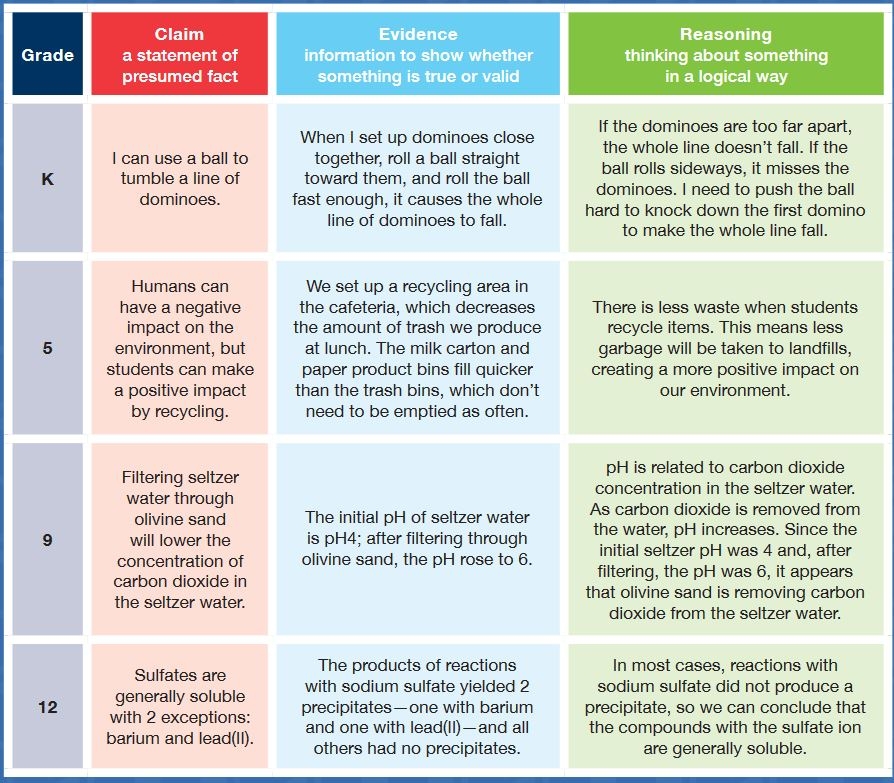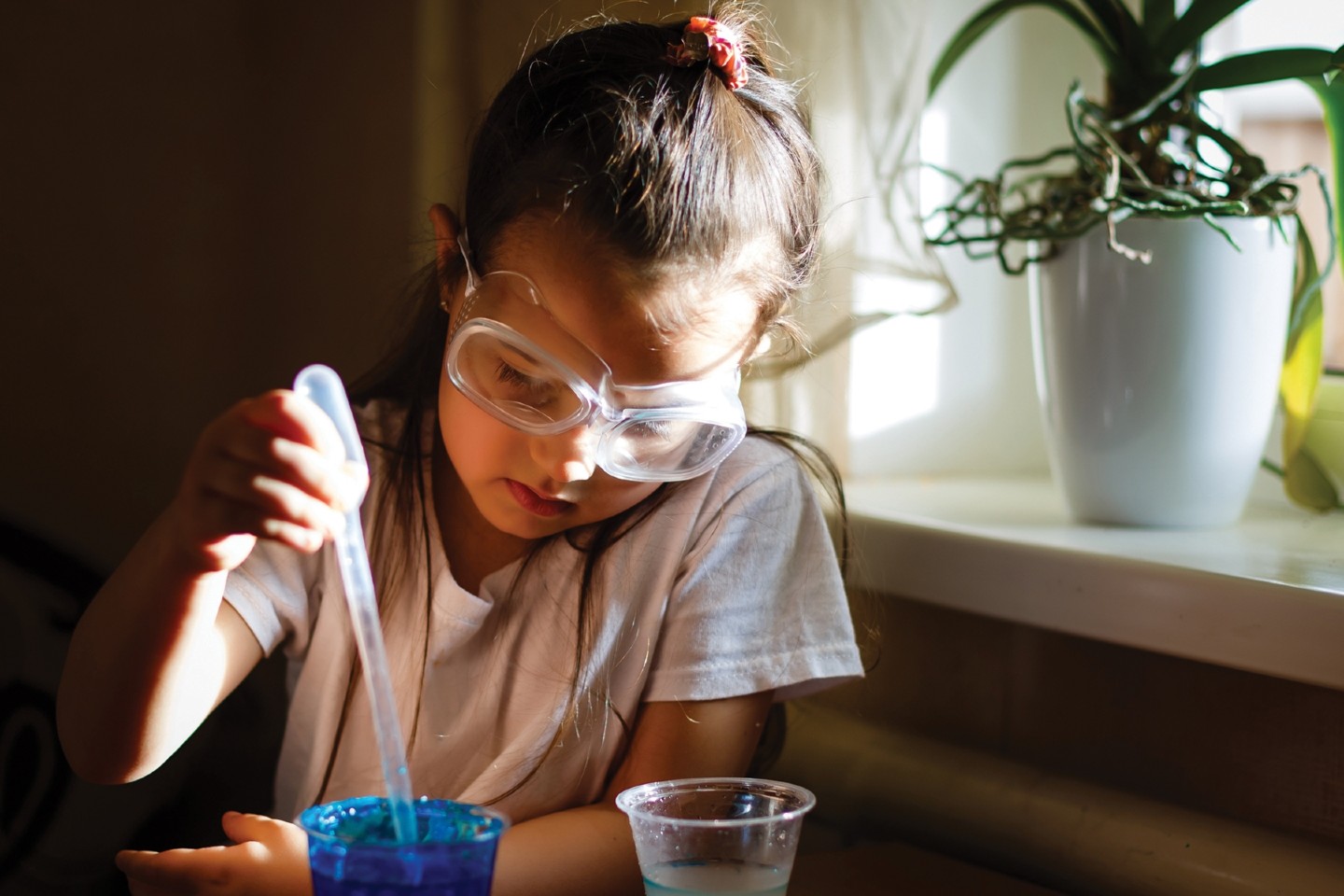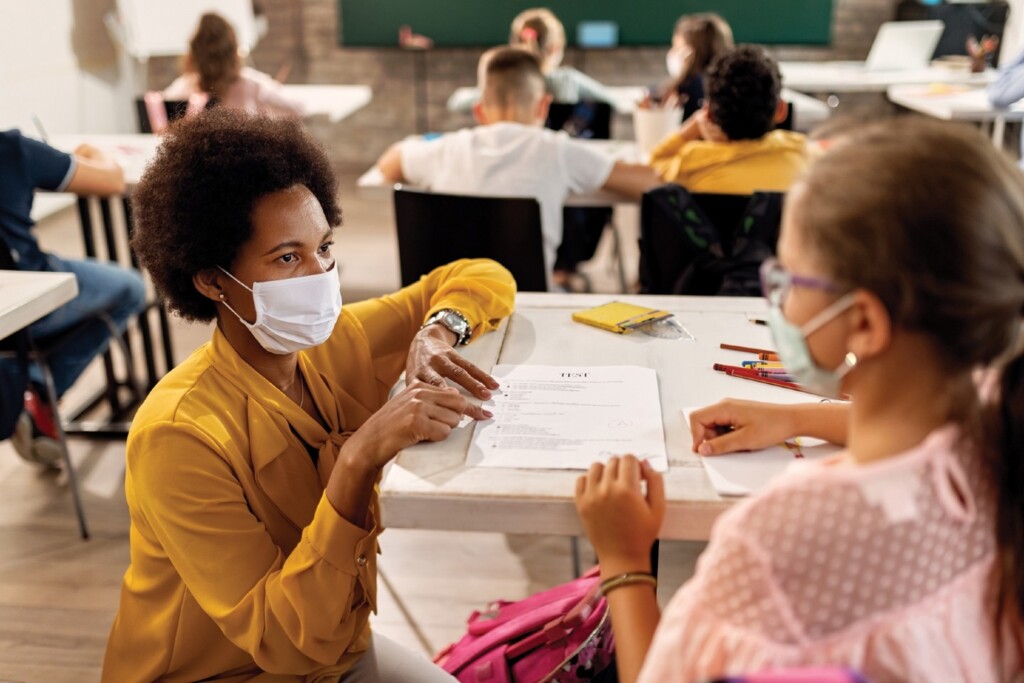How the CER Process Can Help Achieve 3-D Science Proficiency in Any Learning Environment
The facts:
- The 2020—21 school year began with most students learning from remote locations or socially distanced in the classroom (EdWeek Market Brief 2020).
-
Hands-on investigations and collaboration are emphasized in new science standards, particularly those based on A Framework for K—12 Science Education: Practices, Crosscutting Concepts and Core Ideas–which have been adopted in 44 states, impacting 71 percent of US students (NSTA 2020).
The dilemma:
One way to effectively reach all learners–whether students are making observations and gathering evidence through hands-on activities or through video demonstrations supported by teacher comments and questions–is by ingraining the claims-evidence-reasoning (CER) process in daily science investigations. While this process supports the inquiry-based learning that prepares students to connect scientific principles to real-world situations, it takes practice–particularly in achieving reasoning.
“I see teachers say, ‘I know what a claim is. I know what the word evidence means. But what’s the difference between evidence and reasoning?’” Kristen Dotti says. Dotti is a national education consultant and trainer whose recent workshops have guided teachers in best practices for implementing hands-on science education during the upheavals caused by the COVID-19 pandemic. “We’re not going to just make the jump to reasoning by saying, we collected data, let’s get to reasoning. There needs to be clarity.”
“CER is a thinking strategy, and it does take practice,” Hoover Herrera, a national training and customer success specialist for Carolina Biological Supply Company, agrees. “It’s constantly questioning students: What’s your claim? What’s your evidence? What’s your reasoning?”

CER and 3-D Science
Knowing how to construct and support an explanation is an inherent part of the science and engineering practices (SEPs) that, with crosscutting concepts and disciplinary core ideas, comprise the three dimensions of the Next Generation Science Standards* (NGSS) and other similar standards. In three-dimensional science learning, students work to figure out the world around them–to make sense of phenomena or solve problems–through hands-on investigations or virtual simulations as they develop artifacts that weave together the dimensions to demonstrate learning.
Incorporating the CER process helps students, from kindergarten through high school and beyond, behave as scientists and engineers as they develop proficiency.
-
As students ask questions and define problems (SEP 1), they begin to formulate claims about those naturally occurring events or the problems’ criteria and constraints.
-
While developing and using models, planning and carrying out investigations, analyzing and interpreting data, and using mathematics and computation thinking (SEPs 2, 3, 4, and 5, respectively), students gather evidence to support or refute their claims.
-
As students construct explanations and design solutions and engage in argument from evidence (SEPs 6 and 7), they’re developing reasoning that supports their claims. In three-dimensional learning, reasoning and argument are essential to finding the best explanation for a natural phenomenon (science) and the best possible solution to a problem (engineering) (NRC Framework 2012, 52).
-
The claims, evidence, and reasoning merge as students obtain, evaluate, and communicate information (SEP 8).
“The two practices that are very much tied into CER and that teachers are going to know from the NGSS are evidence-based argumentation and communication that is consistent with the scientific process,” Dotti explains. “We’re fact-based in our communication rather than opinion-based, and we use citation, references, and then evidence-based argumentation, which is dependent on data in order to support claims.”
Claim
A statement that answers an essential, or driving, question about phenomena. Students make claims concerning various scenarios based on observations and data they have collected to help develop understanding of concepts.
Evidence
The observations and data students collect to support claims they make as being valid or true.
Reasoning
The logical way in which students make claims, support the claims with evidence, and explain their claims.
Steps to CER Proficiency
 Whether learning in a physical or virtual classroom, there should be multiple opportunities for students to make sense of scientific concepts by developing claims and supporting their claims with evidence and reasoning.
Whether learning in a physical or virtual classroom, there should be multiple opportunities for students to make sense of scientific concepts by developing claims and supporting their claims with evidence and reasoning.

The journey toward understanding the CER process needs to start in kindergarten.
Begin with a question related to a phenomenon or scientific concept, or for engineering, ask a question to define a problem. This is the essential question of the investigation that turns students’ focus to a specific anchoring phenomenon or a problem to solve. “Students at any grade level should be able to ask questions of each other about the texts they read, the features of the phenomena they observe, and the conclusions they draw from their models or scientific investigations (NRC Framework 2012, 55).”
“In a science unit, it should be very clear that each lesson has its own investigative phenomenon that supports the anchoring phenomenon, so all claims are linked to that phenomenon,” Herrera says. “That helps all learners. We confuse students when we change gears. Stay on target, stay on message, and it will help to make more sense.”
In hands-on investigations, attention-getting introductions immediately engage students and drive their curiosity to discover more about the phenomenon or problem.
Guide students to draw upon previous knowledge and experiences to develop a statement that answers the question or solves the problem. Students’ claims need to revolve around the question related to the phenomenon or problem.
Teachers should accept that students’ claims may not be accurate, and students should be aware that whatever claim they make, they’re going to have to support it with evidence. Herrera advises, “Tell students that we’re going to do some activities and some investigations that we will, through observations, be able to gain some evidence to back up or to disprove our claim. Then we can move forward and dig deeper.”
As students’ thinking becomes more sophisticated, Dotti says, it’s critical for them to recognize whether claims are based on logical fallacy. “Just because somebody who is smart or reputable or authoritative says something, it doesn’t mean it’s true,” she explains. “If you don’t stop and say, ‘That’s a logical fallacy,’ then it’s a faulted claim and there’s a weak link early in the CER progression.”
Engage students in hands-on investigations or provide video demonstrations for students to explore their claims. “With science, it’s always been, ‘Back it up.’ ‘Why?’ ‘Why do you say that?’” Herrera says. “It leads to that higher level of thinking and, oftentimes, leads to that engineering, problem-solving cycle where it provides opportunities for students to refine their solution, refine their answer. The two–scientific inquiry and engineering design–tie nicely together.”
As students explore their claims, they gather relative and specific data as evidence. The data may come from previous investigations, inference clues, texts, peer discussions in person or on a video conferencing website, and personal experiences. After their investigations, students should evaluate whether their initial claims are supported by the newly gathered evidence. If the evidence doesn’t support the claims, they should identify the misunderstandings and present new claims that are supported.
“We have to stop and ask whether our sources are reputable and do we have multiple lines of evidence in order to make it to reasoning,” Dotti says. “We’re not going to just make the jump to reasoning by saying we collected data. There should be stop signs to help students as they develop scientific logic lines to achieve evidence-based argument.”
Guide students in scientific argumentation to justify why the evidence supports their claims. Reasoning provides justification for why the evidence supports the claim. This is one area where remote learning offers advantages.
“To me, the silver lining of virtual learning is it requires more visible thinking,” Dotti says. “There are lots of ways for students to make thinking visible: Write what you’re thinking. Show me a diagram of what you visualize. Construct a mind map. What caused you to change your point of view? I want you to process what’s occurring in your brain as you transition from a lower knowledge and application to a higher understanding and greater depth.”
Herrera agrees that connecting the claim and evidence to articulate reasoning is the heavy lifting. “Students always think that the teacher has all the answers,” he explains. “But teachers don’t have all the answers as far as how the results are on an activity or an observation. The outcomes can change, so they don’t have why.”
Writing can help students express their reasoning, but that’s one area where scaffolding is imperative in a curriculum. For a kindergartner, a full page with kid-friendly, age-appropriate verbiage can provide guidance for expressing observations through drawings or words. But for a grade 5 student, an investigation sheet with CER boxes helps the student be concise. For high schoolers, hands-on labs that encourage note-booking can demonstrate reasoning developed through genuine inquiry.
To me, the silver lining of virtual learning is it requires more visible thinking.

Gathering Evidence While Remote
Although hands-on activities provide the optimal learning opportunities, video demonstrations of investigations can serve as acceptable substitutes when students are unable to learn in the classroom. Using a video conferencing website, the teacher can:
-
Demonstrate the hands-on components of the lessons using videos provided by the curriculum developer that maintain the continuity of the unit storyline
-
Use high-quality videos of investigations that allow teachers to add their own commentary and enable students to directly observe and make sense of phenomena
“The video should have no audio so the teacher can stop the video and ask the questions,” Herrera explains. “If it’s a video with audio where someone is explaining what’s going on, getting to reasoning is not going to happen.”
As students watch the video demonstration, they are still able to articulate their observations in their virtual classroom just as they would in a physical setting, providing the multiple voices that can lead to deeper analytical thinking and sensemaking. Then they can continue their learning independently through extension activities that apply the big idea to things they may see in their homes and communities. This encourages them to think and problem solve on their own and leads to a richer discussion as they communicate and collaborate with their teacher and classmates in any learning environment.
ABOUT BUILDING BLOCKS OF SCIENCETM 3D
Building Blocks of Science™ 3D is an all-inclusive, hands-on, phenomena-based curriculum developed to establish a solid foundation in elementary science while precisely connecting daily instruction to the NGSS. It empowers students to ask questions, investigate possibilities, and build solutions through multiple opportunities to engage in three-dimensional learning anchored in phenomena.
The new BBS3D@Home digital component maintains the continuity of the unit storyline used in the classroom for students who are learning remotely, enabling teachers to spend less time and energy on organizing and planning so they can provide the best learning experience for their students no matter where they learn.
See how the easy-to-use Building Blocks of Science™ 3D curriculum can promote equity and rigor in your students’ science education.
ABOUT CAROLINA KITS 3D® FLEX
Whether in school or during remote instruction, the Carolina Kits 3D® Flex and Carolina Kits 3D® Flex Digital full-year programs keep grades 9—12 students motivated, engaged, and learning with a variety of authentic hands-on and digital science experiences that support three-dimensional learning. The programs not only incorporate the CER process in the investigations but were developed using the CER process.
These programs supplement any high school curriculum with investigations that safely and seamlessly transition from socially distanced in the classroom to remote as teachers lead students through genuine inquiry.
References
EdWeek Market Brief. August 7, 2020. “Reopening Schools Tracker: Latest Data from Districts Across the U.S.” Accessed August 2020: https://marketbrief.edweek.org/exclusive-data/reopening-schools-tracker-latest-data-from-districts-across-the-us/.
National Research Council. 2012. A Framework for K—12 Science Education: Practices, Crosscutting Concepts, and Core Ideas. Committee on Conceptual Framework for New K—12 Science Education Standards. Board on Science Education. Division of Behavioral and Social Sciences and Education. Washington DC: The National Academies Press.
National Science Teaching Association. 2020. “K—12 Science Standards Adoption.” Accessed July 2020: https://ngss.nsta.org/about.aspx#:~:text=Twenty%20states%20and%20the%20District,Generation%20Science%20Standards%20(NGSS).
*Next Generation Science Standards® is a registered trademark of Achieve/WestEd. Neither Achieve nor the lead states and partners that developed the Next Generation Science Standards were involved in the production of, and do not endorse, these products.
Get details on how the Carolina Kits 3D® Flex and the Carolina Kits 3D® Flex Digital programs promote continuity in rigorous science learning.



